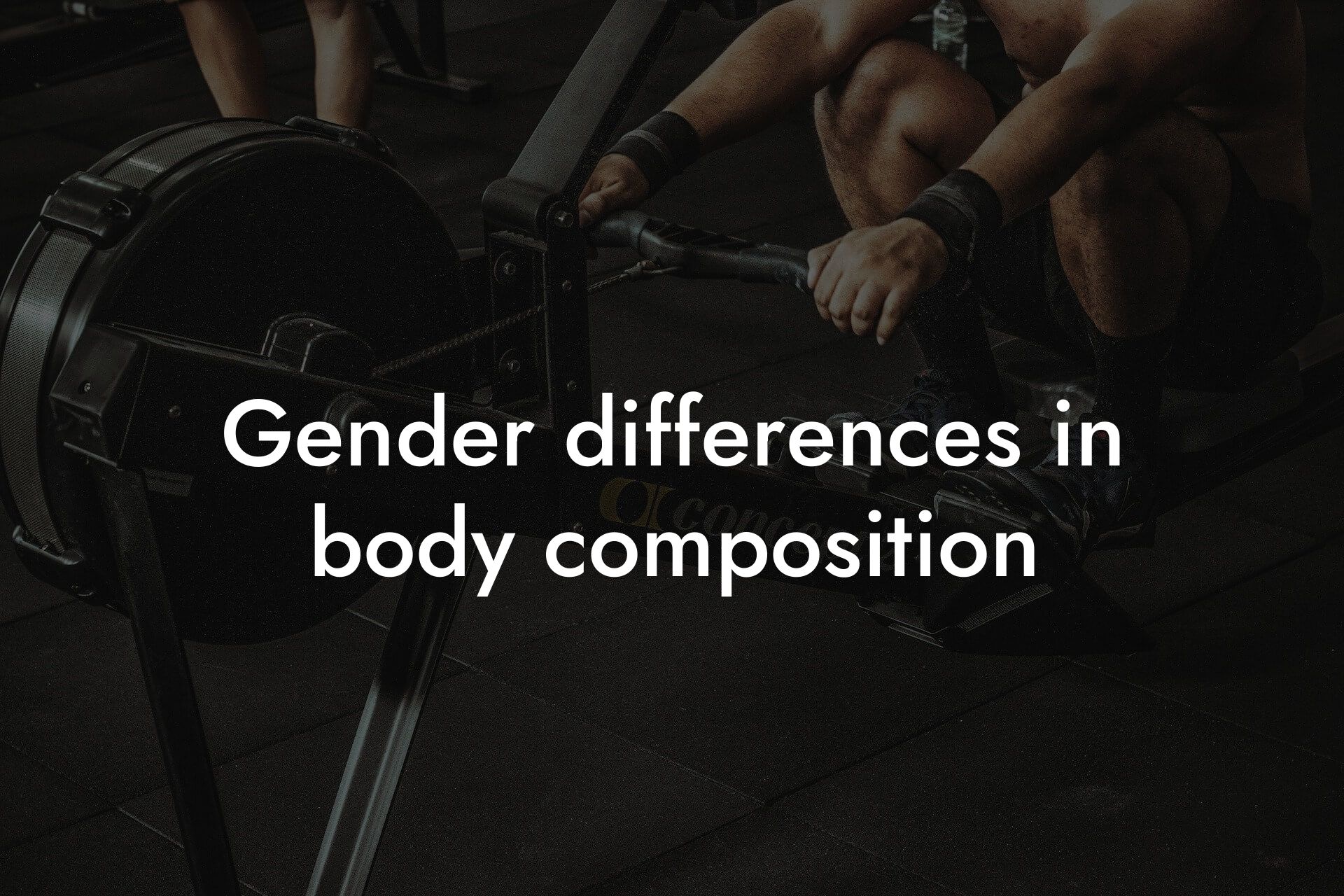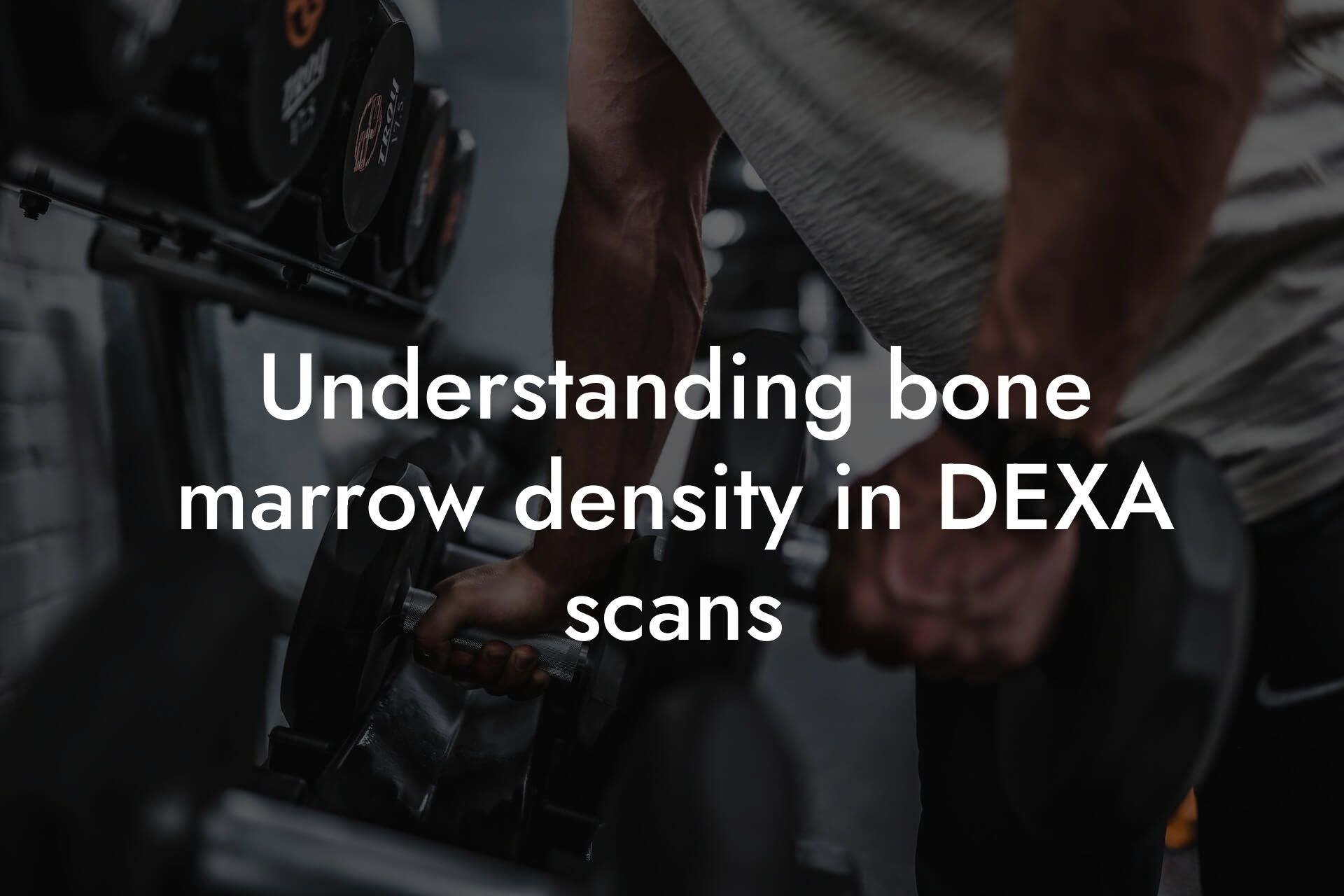As high-earning professionals, you understand the importance of maintaining a healthy and fit physique. One effective way to achieve this is through endurance training, which can significantly impact your body composition. But what exactly happens to your body when you engage in regular endurance training? In this article, we'll delve into the changes that occur in your body composition as a result of endurance training, and how our DEXA machine can help you track these changes and optimize your fitness journey.
Table of Contents
What is Body Composition?
Body composition refers to the percentage of fat mass and lean mass in your body. Lean mass includes muscle, bone, and water, while fat mass includes both essential and storage fat. Understanding your body composition is crucial because it affects your overall health, fitness, and physical appearance. A healthy body composition is typically characterized by a high percentage of lean mass and a low percentage of fat mass.
The Effects of Endurance Training on Body Composition
Endurance training, such as running, cycling, or swimming, is a type of aerobic exercise that targets your cardiovascular system. Regular endurance training can lead to significant changes in your body composition. Here are some of the key effects:
• Fat Loss: Endurance training is an effective way to burn calories and shed excess fat. As you engage in regular endurance training, your body adapts by increasing its ability to burn fat as a fuel source, leading to a decrease in fat mass.
• Muscle Gain: While endurance training may not be as effective for building muscle mass as resistance training, it can still lead to an increase in muscle mass, particularly in the legs and core.
• Increased Bone Density: Endurance training, especially weight-bearing exercises like running, can help increase bone density, reducing the risk of osteoporosis and fractures.
How Endurance Training Affects Different Body Parts
Endurance training can have varying effects on different body parts. Here's a breakdown of how endurance training can impact your body composition in different areas:
• Legs: Endurance training, such as running or cycling, can lead to an increase in muscle mass in the legs, particularly in the quadriceps, hamstrings, and glutes.
•
• Upper Body: While endurance training may not have a significant impact on upper body muscle mass, it can still lead to an increase in endurance and stamina in the arms and shoulders.
The Importance of Monitoring Body Composition
Monitoring your body composition is crucial to understanding the effectiveness of your endurance training program. By tracking changes in your body composition, you can:
• Optimize Your Training: Identify areas that need improvement and adjust your training program accordingly.
• Track Progress: See the results of your hard work and stay motivated.
• Improve Overall Health: Identify potential health risks, such as high body fat percentage, and take corrective action.
How DEXA Scans Can Help
At Tano Performance Group, we use DEXA (Dual-Energy X-ray Absorptiometry) scans to provide a comprehensive body composition analysis. DEXA scans are a non-invasive, pain-free way to measure body fat percentage, lean mass, and bone density. Our DEXA scans can help you:
• Accurately Track Changes: Get precise measurements of your body composition and track changes over time.
• Identify Areas for Improvement: Pinpoint areas that need attention, such as low muscle mass or high body fat percentage.
• Optimize Your Training: Use the data from your DEXA scan to adjust your training program and nutrition plan.
In conclusion, endurance training can have a significant impact on your body composition, leading to fat loss, muscle gain, and increased bone density. Monitoring your body composition is crucial to understanding the effectiveness of your training program and making adjustments to optimize your results. At Tano Performance Group, our DEXA scans can provide you with the data you need to take your fitness journey to the next level. By combining endurance training with regular body composition analysis, you can achieve a leaner, healthier, and more athletic physique.
Take the First Step Towards a Leaner, Healthier You
Ready to take control of your body composition and optimize your endurance training? Contact us at Tano Performance Group to schedule your DEXA scan and take the first step towards a leaner, healthier, and more athletic you.
Frequently Asked Questions
What is body composition, and why is it important for endurance athletes?
Body composition refers to the percentage of fat mass and lean mass in your body. As an endurance athlete, understanding your body composition is crucial because it directly impacts your performance. A higher percentage of lean mass can improve your power-to-weight ratio, allowing you to perform better during endurance events. At Tano Performance Group, we believe that optimizing body composition is key to achieving your physical goals.
How does endurance training affect body composition?
Endurance training can lead to significant changes in body composition. As you engage in regular endurance exercises, your body adapts by increasing your lean mass and decreasing your fat mass. This shift in body composition can improve your overall athletic performance and enhance your physical appearance.
What are the benefits of increasing lean mass through endurance training?
Increasing lean mass through endurance training can have numerous benefits, including improved muscle strength, enhanced endurance, and a faster metabolism. Additionally, having more lean mass can also improve your bone density, reducing the risk of osteoporosis and fractures.
How does endurance training affect body fat percentage?
Regular endurance training can lead to a significant reduction in body fat percentage. As your body adapts to the demands of endurance exercise, it becomes more efficient at burning fat as fuel, resulting in a decrease in body fat stores.
What is the optimal body fat percentage for endurance athletes?
The optimal body fat percentage for endurance athletes varies depending on the individual and their specific goals. However, a general guideline is to aim for a body fat percentage between 10-15% for men and 15-20% for women. At Tano Performance Group, we can help you determine your ideal body fat percentage based on your unique needs and goals.
How quickly can I expect to see changes in my body composition with endurance training?
The rate at which you see changes in your body composition with endurance training depends on several factors, including your starting point, training intensity, and consistency. However, with a well-structured training program and a healthy diet, you can expect to see noticeable changes in as little as 6-8 weeks.
What role does nutrition play in body composition changes with endurance training?
Nutrition plays a critical role in body composition changes with endurance training. A well-balanced diet that provides adequate protein, complex carbohydrates, and healthy fats can support muscle growth and fat loss. At Tano Performance Group, we can help you develop a personalized nutrition plan to optimize your body composition.
How can I track changes in my body composition?
There are several ways to track changes in your body composition, including skinfold measurements, body fat calipers, and dual-energy X-ray absorptiometry (DXA) scans. At Tano Performance Group, we recommend using a combination of these methods to get an accurate picture of your body composition.
What is the difference between lean mass and muscle mass?
Lean mass refers to the total amount of non-fat tissue in your body, including muscle, bone, and water. Muscle mass, on the other hand, specifically refers to the amount of muscle tissue in your body. While there is some overlap between the two, they are not interchangeable terms.
How does endurance training affect bone density?
Endurance training can have a positive impact on bone density, particularly in older adults. Regular endurance exercise can help stimulate bone growth and reduce the risk of osteoporosis and fractures.
What is the relationship between body composition and athletic performance?
Body composition has a direct impact on athletic performance. A higher percentage of lean mass can improve power-to-weight ratio, allowing athletes to perform better during endurance events. Additionally, a lower body fat percentage can also improve athletic performance by reducing energy expenditure and improving thermoregulation.
Can endurance training help with weight loss?
Yes, endurance training can be an effective way to lose weight and improve body composition. By increasing your lean mass and decreasing your fat mass, you can improve your metabolism and burn more calories at rest.
How does endurance training affect visceral fat?
Endurance training can help reduce visceral fat, which is the fat that accumulates around your organs. Excess visceral fat is associated with an increased risk of chronic diseases, such as heart disease and type 2 diabetes.
What is the optimal training frequency and duration for endurance training?
The optimal training frequency and duration for endurance training vary depending on your individual goals and current fitness level. However, a general guideline is to aim for 3-5 training sessions per week, with each session lasting at least 30-45 minutes.
How can I incorporate strength training into my endurance training program?
Incorporating strength training into your endurance training program can help improve your overall athletic performance. Focus on exercises that target your core, legs, and glutes, such as squats, lunges, and deadlifts.
What is the role of recovery in body composition changes with endurance training?
Recovery plays a critical role in body composition changes with endurance training. Adequate recovery allows your body to adapt to the demands of exercise, leading to changes in body composition. Make sure to prioritize rest and recovery in your training program.
How can I stay motivated to continue endurance training and tracking my body composition?
Staying motivated to continue endurance training and tracking your body composition can be challenging. At Tano Performance Group, we recommend setting specific, measurable goals and tracking your progress regularly. Celebrate your successes and don't be too hard on yourself when you encounter setbacks.
What are some common mistakes that endurance athletes make when it comes to body composition?
Common mistakes that endurance athletes make when it comes to body composition include not fueling their bodies adequately, neglecting strength training, and not prioritizing recovery. At Tano Performance Group, we can help you avoid these common mistakes and optimize your body composition.
How can I use my body composition data to inform my training and nutrition?
Using your body composition data to inform your training and nutrition can help you optimize your body composition and improve your athletic performance. At Tano Performance Group, we can help you interpret your body composition data and develop a personalized training and nutrition plan.
What are some additional resources that I can use to learn more about body composition and endurance training?
There are many additional resources available to learn more about body composition and endurance training, including books, online articles, and training programs. At Tano Performance Group, we recommend consulting with a qualified healthcare professional or certified trainer to get personalized advice and guidance.
How can I get started with endurance training and tracking my body composition?
Getting started with endurance training and tracking your body composition can seem overwhelming, but it doesn't have to be. At Tano Performance Group, we recommend starting with small, achievable goals and gradually increasing your training intensity and frequency. Don't be afraid to seek guidance from a qualified healthcare professional or certified trainer.
What are the long-term benefits of endurance training on body composition?
The long-term benefits of endurance training on body composition include improved overall health, increased lean mass, and decreased body fat percentage. Additionally, regular endurance training can also reduce the risk of chronic diseases, such as heart disease and type 2 diabetes.
How can I maintain my body composition gains over time?
Maintaining your body composition gains over time requires a long-term commitment to regular endurance training and a healthy diet. At Tano Performance Group, we recommend continuing to challenge yourself with new training goals and seeking guidance from a qualified healthcare professional or certified trainer.
What are some common myths about body composition and endurance training?
There are several common myths about body composition and endurance training, including the idea that you need to be thin to be healthy or that endurance training will make you bulky. At Tano Performance Group, we can help you separate fact from fiction and develop a personalized training and nutrition plan that meets your unique needs and goals.
Here are some related articles you might love...
- The role of brown fat in body composition
- Gender differences in body composition
- Understanding bone marrow density in DEXA scans
- How DEXA scans detect visceral fat
- Advanced body composition metrics: Lean mass index
- The impact of muscle asymmetry on body performance
- How body composition affects metabolic rate
- Differences between subcutaneous and visceral fat
- How hydration levels affect body composition results
Zak Faulkner
Zak Faulkner is a leading authority in the realm of physical health and body composition analysis, with over 15 years of experience helping professionals optimise their fitness and well-being. As one the experts behind Tano Performance Group, Zak has dedicated his career to providing in-depth, science-backed insights that empower clients to elevate their physical performance and overall health.
With extensive knowledge of DEXA technology, Zak specializes in delivering comprehensive body assessments that offer precise data on body fat, muscle mass, bone density, and overall physique. His expertise enables individuals to make informed decisions and achieve their fitness goals with accuracy and confidence. Zak’s approach is rooted in a deep understanding of human physiology, combined with a passion for helping clients unlock their full potential through personalised strategies.
Over the years, Zak has earned a reputation for his commitment to excellence, precision, and client-focused service. His guidance is trusted by top professionals who demand the best when it comes to their health. Whether advising on fitness programs, nutritional strategies, or long-term wellness plans, Zak Faulkner’s insights are a valuable resource for anyone serious about taking their health and fitness to the next level.
At Tano Performance Group, Zak continues to lead our Content Team revolutionising how professionals approach their physical health, offering unparalleled expertise that drives real results.




